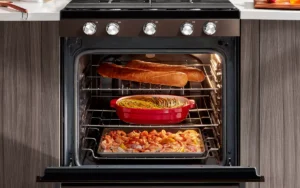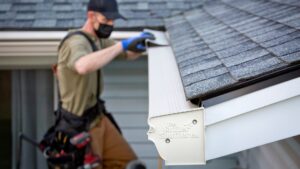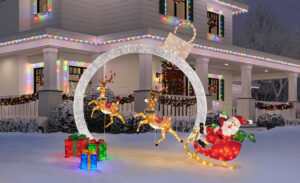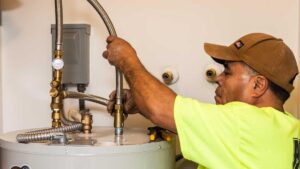Hey there, home maintenance heroes! Ready to tackle those outdoor cleaning projects with gusto? Pressure washing is your secret weapon. It’s an exhilarating way to blast away dirt, grime, and mildew, leaving your outdoor spaces looking brand new. Whether you’re a newbie or just need a refresher, this guide will walk you through everything you need to know about pressure washing. So, grab your gear and let’s get started!
Why Pressure Wash?
First things first, why should you even consider pressure washing? Well, pressure washing is incredibly effective at removing stubborn dirt, mold, mildew, and algae from various surfaces. It’s perfect for cleaning driveways, sidewalks, decks, patios, fences, and even siding. Not only does it improve your home’s curb appeal, but it also helps prevent the deterioration of surfaces caused by grime buildup.
Choosing the Right Pressure Washer
Before you dive into the cleaning action, you need to pick the right pressure washer. There are two main types: electric and gas-powered.
Electric Pressure Washers: These are ideal for smaller jobs and are usually more affordable and easier to maintain. They are perfect for cleaning patios, decks, and vehicles. They are also quieter and lighter, making them user-friendly for beginners.
Gas-Powered Pressure Washers: If you have a larger area to clean or need more power, gas-powered washers are the way to go. They offer higher pressure and greater mobility since they don’t require an electrical outlet. They are perfect for cleaning driveways, sidewalks, and large patios.
Understanding Pressure Washer Specs
Pressure washers have a couple of key specs you should understand: PSI (pounds per square inch) and GPM (gallons per minute).
PSI: This measures the pressure of the water. Higher PSI means more cleaning power. For light cleaning, 1300-1800 PSI is sufficient. For tougher jobs, 2000-3000 PSI is more appropriate.
GPM: This measures the water flow. Higher GPM means more water is used, which can speed up the cleaning process. Most residential pressure washers range from 1.2 to 2.5 GPM.
Essential Accessories
To get the most out of your pressure washer, you’ll need a few accessories:
Nozzles: These control the spray pattern and pressure. Nozzles are typically color-coded: red (0 degrees) for pinpoint, yellow (15 degrees) for stripping, green (25 degrees) for general cleaning, white (40 degrees) for gentle cleaning, and black (65 degrees) for applying soap.
Extension Wands: These help you reach high places without a ladder.
Surface Cleaners: These attachments make cleaning large flat surfaces like driveways and decks much faster and more even.
Safety First
Pressure washing can be exhilarating, but it also comes with risks. Follow these safety tips to ensure a safe cleaning session:
- Wear Protective Gear: Always wear safety goggles, gloves, and closed-toe shoes. Long pants and sleeves can protect your skin from flying debris.
- Test the Pressure: Start with a low-pressure nozzle and test it on a small, inconspicuous area. This helps prevent damage to surfaces.
- Keep a Safe Distance: Maintain a distance of at least 6 inches from the surface you’re cleaning to avoid damaging it.
- Avoid Electrical Hazards: Keep the pressure washer away from electrical outlets and fixtures. Be cautious of extension cords and always use GFCI outlets for electric models.
- Mind Your Surroundings: Be aware of your surroundings, including pets, plants, and people. Pressure washing can cause injury if not handled carefully.
Preparing the Area
Before you start pressure washing, it’s essential to prep the area:
- Clear the Area: Remove any furniture, toys, or other obstacles from the cleaning area.
- Cover Delicate Plants: Use plastic sheeting or tarps to protect plants and shrubs from the high-pressure spray.
- Sweep and Scrub: Remove loose dirt and debris with a broom. For stubborn stains, a scrub brush can help loosen the grime.
- Close Windows and Doors: Ensure all windows and doors are closed to prevent water from getting inside.
Cleaning Different Surfaces
Now, let’s get to the fun part—cleaning! Different surfaces require different techniques and nozzles.
Driveways and Sidewalks: Use a 25-degree nozzle for concrete surfaces. Start at one end and work your way to the other, moving the nozzle in a sweeping motion. For stubborn stains, a surface cleaner attachment can make the job easier.
Decks and Patios: Wood and composite decks need a gentler touch. Use a 40-degree nozzle and keep the wand moving to avoid gouging the wood. For composite decks, check the manufacturer’s recommendations.
Siding: Vinyl, aluminum, and wood siding can be pressure washed, but be cautious. Use a 25-degree or 40-degree nozzle and work from top to bottom. Avoid spraying under the siding panels, which can force water behind them.
Fences: For wood fences, use a 25-degree nozzle and clean in sections. Start at the top and work your way down, keeping the nozzle moving to avoid streaks.
Outdoor Furniture: Plastic and metal furniture can be cleaned with a 40-degree nozzle. For wood furniture, use a gentle touch to avoid damage.
Using Detergents
Sometimes, water alone isn’t enough to tackle tough stains. Using the right detergent can make all the difference. Make sure to use detergents specifically designed for pressure washers.
- Choose the Right Detergent: Different detergents are formulated for different surfaces, such as concrete, wood, or vinyl. Read the labels to ensure you’re using the right one.
- Apply Detergent: Attach the detergent nozzle (usually black) and fill the detergent tank. Apply the detergent from the bottom up, allowing it to soak for a few minutes.
- Rinse Thoroughly: Switch back to the appropriate nozzle (usually 25 or 40 degrees) and rinse the detergent off from top to bottom.
Finishing Up
After you’ve blasted away all the grime, it’s time to wrap things up:
- Turn Off and Disconnect: Turn off the pressure washer and disconnect it from the water supply. Release any remaining pressure by squeezing the trigger.
- Clean and Store: Clean the nozzles and other attachments, and store the pressure washer in a dry place. Proper maintenance ensures your pressure washer will be ready for the next cleaning session.
- Inspect Your Work: Take a walk around the area you cleaned. Make sure you didn’t miss any spots and check for any damage that might need repairing.
Troubleshooting Common Issues
Even with the best preparation, you might encounter a few hiccups. Here are some common issues and how to solve them:
Low Pressure: Check for blockages in the nozzles or hoses. Make sure the water supply is adequate and that there are no leaks.
No Water Flow: Ensure the water supply is on and the hoses are properly connected. Check the inlet filter for debris.
Streaks on Surfaces: This can be caused by holding the nozzle too close or not moving it consistently. Practice keeping a steady hand and a consistent distance.
Happy Cleaning!
Pressure washing is a fantastic way to rejuvenate your outdoor spaces. With the right equipment, proper technique, and a little bit of practice, you’ll have your home looking its best in no time. So, roll up those sleeves, put on your favorite playlist, and enjoy the satisfying process of blasting away the grime. Your outdoor oasis awaits!









